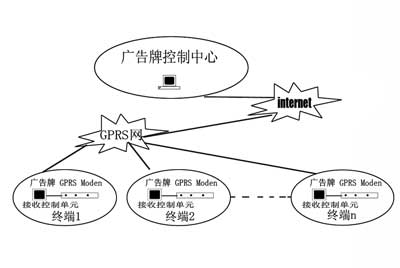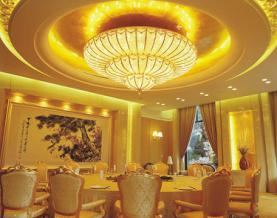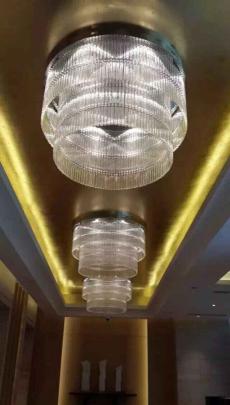Development of Remote Control System of Billboard Based on GPRS
The billboard is a kind of information display terminal facing the public, and has very wide civil and commercial value. And now most of the information displayed on the billboards are solidified in the system in advance, which loses the real-time nature of the information. Based on the traditional control method, the change of the display screen is quite cumbersome. Generally, it needs to be re-programmed and re-updated by the engineering staff to the scene of the billboard. This article presents a new solution for remotely controlling billboards via GPRS, which enables flexible changes to the content and display of billboards, making it very convenient to use.
Introduction to GPRS
GPRS (General Packet Radio Service) is an abbreviation of General Packet Radio Service. It is a technology between the second and third generation networks, because it is a hybrid, which uses TDMA to transmit voice and uses packets. Transmit data, usually called 2.5G. GPRS has the following outstanding advantages, such as high resource utilization rate, high transmission rate, short access time, support for IP protocol and X.25 protocol, wireless access, convenient and fast, and wide network coverage.

Figure 1 Schematic diagram of the system
system design
1 Overall system design
It can be seen from Fig. 1 that the billboards distributed in various places, the receiving control unit on the scene access the Internet by means of GPRS network, and realize the remote data transmission between the control center. In Figure 1, on the one hand, each receiving control unit is responsible for controlling the display content of the billboard, on the other hand, it can be used as a remote terminal (slave station) at any time to establish a TCP for data transmission through the GPRS Modem Internet access and control center (server) / IP link, the control center can send commands or data to the slave station through this TCP / IP link to modify the data in each receiving control unit to achieve automatic remote update.
2 Receive control unit
As shown in Fig. 2, it is a receiving control unit installed at the billboard site for controlling the billboard. The core of the unit is an AT89C52 microcontroller of ATMEL, the chip contains 8Kb Flash program memory, an RS232 TTL serial interface and so on. A 64Kb FLASH memory is expanded through the P0 and P2 ports of AT89C52 to store control data. Among them, the low 8Kb address area overlaps with the on-chip 8Kb program storage area and cannot be occupied. The actual available 56Kb. Through the address decoder decoding strobe 74LS273 8-bit latch, you can expand several static output ports. The CPU sends the data to the corresponding address port respectively, latches through 74LS273 and drives the display part to display the advertisement content.

Figure 2 receiving control unit
3 GPRS network interface
The structure of GPRS Modem is shown in Figure 3. Its internal structure includes: GPRS wireless module and embedded TCP / IP module and control module. The function of the control module is to initialize the GPRS wireless module through the AT command, make it connect to the GPRS network and obtain a dynamic IP address, and establish a connection with the server of the control center, and connect to the serial port of the control system through the three-wire RS232 TTL interface. Through the TCP / IP module, the receiving control unit and network data are sent and received. There are two modes for the receiving control unit to access the GPRS Modem. When the AT command is transmitted, the module enters the transparent mode and can directly access the wireless module; in the non-transparent mode, the receiving control unit enters the TCP / IP module from the serial port, The TCP / IP packet is sent to the wireless module, and the GPRS wireless module encapsulates it into packet data packets and transmits them to the GPRS network, and then sends them to the central server via the Internet.

Figure 3 GPRS Modem structure
The control center accesses the Internet and transmits the data to the receiving control unit terminal of the billboard site through the GPRS network. After receiving and unpacking by the GPRS Modem, the data is sent to the single-chip microcomputer through the RS232 serial port. After analysis, the newly acquired data is overwritten into Flash , So as to achieve the effect of content update.
System flow

Figure 4 PAP negotiation process The main flow chart of the system is shown in Figure 4. After completing the system initialization, the GPRS module actively exchanges data with the SERVER for the first time. The GPRS module is connected to the Internet by PPP, so the PPP connection must be completed first. The PPP connection includes: LCP negotiation, PAP negotiation, and IPCP negotiation. Due to space limitations, this article only lists the PAP negotiation flow chart as shown in Figure 4.
Conclusion The billboard update system designed in this paper has been verified by experiments with the help of GPRS technology. It has also achieved good results in practical applications and has broad market prospects, such as traffic, weather forecast, advertising, notification, industrial and agricultural Production, commercial information release and other fields. The module used in this design is simple in structure, small in size, high in reliability and strong in practicability.
Project lamps is based on the actual needs of the project, customized for the specific lighting products, it plays decorative effect, also known as non-standard lamps, decorative lamps, custom lamps and so on. Engineering lamps feature with custom, long production time, high production technology, strong professionallity , weak liquidity, highly difficult installation, after-sales service and so on.



Project Lamp,Rechargeable Spot Light,Lobby Room Project,Airport Project
Zhongshan Laidi Lighting Co.,LTD , http://www.idealightgroup.com